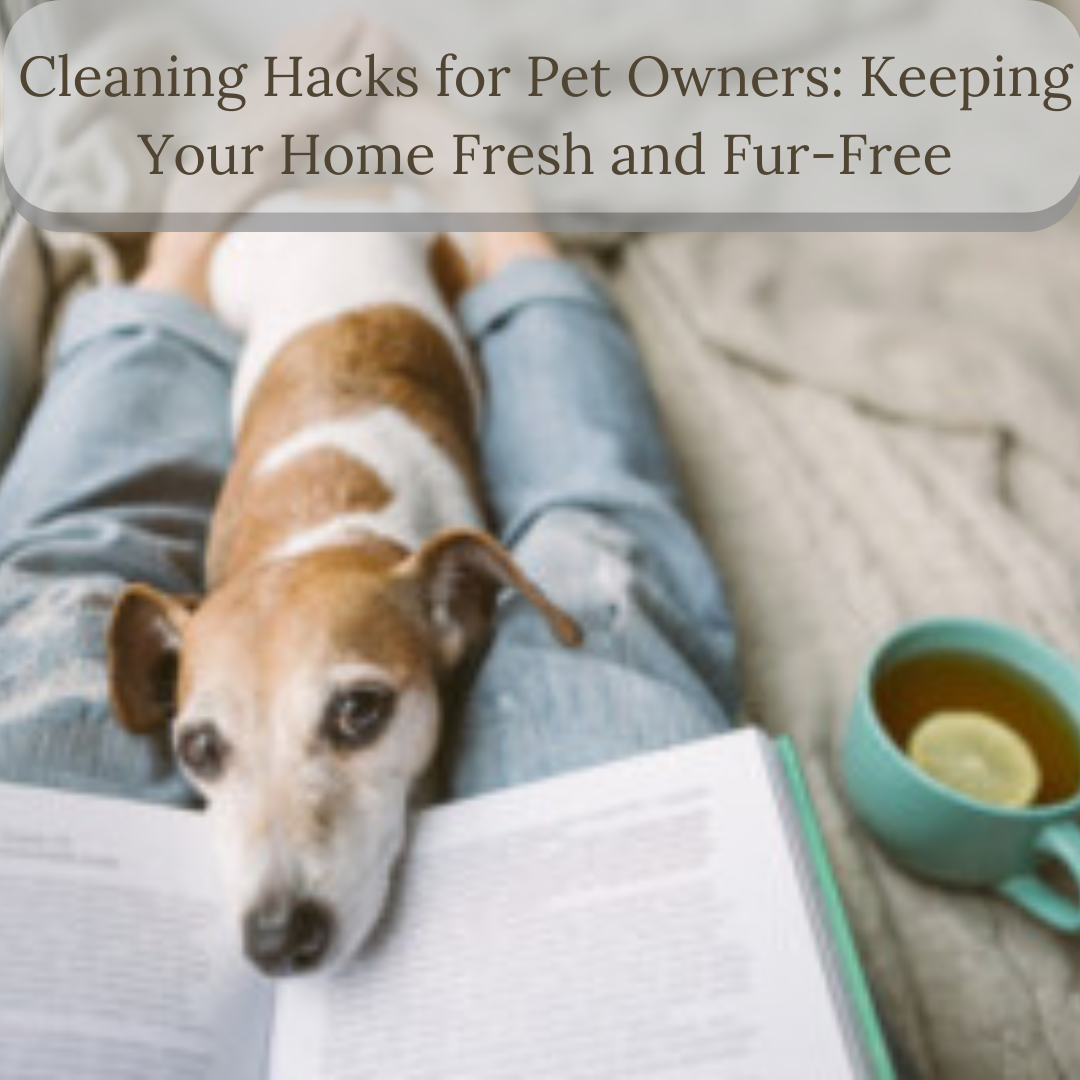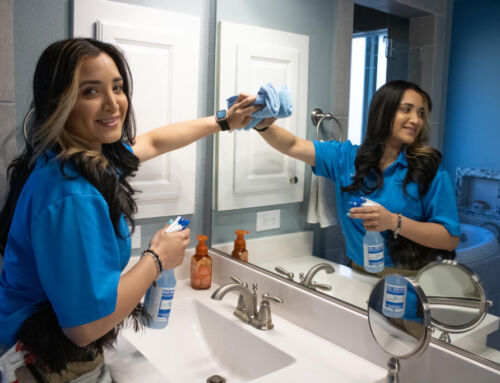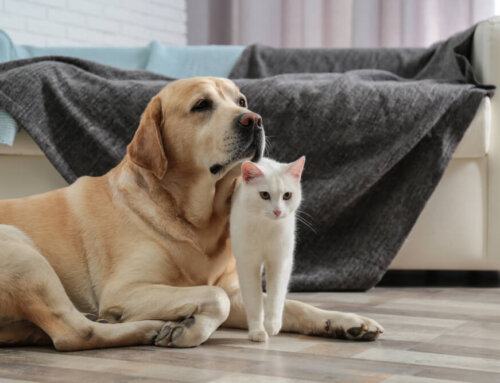As a pet owner, maintaining a clean and fur-free home is essential for the health and happiness of both you and your furry friend. However, it can sometimes feel like an uphill battle. From pet hair on furniture to lingering odors and unexpected messes, the challenges can be overwhelming. But fear not! With the right cleaning hacks and strategies, you can easily tackle these issues and create a clean and pet-friendly environment for everyone to enjoy.
The Importance of Cleanliness for Pet Owners
Keeping your home clean as a pet owner goes beyond mere aesthetics. It is crucial for creating a healthy and safe environment for both you and your pets. Regular cleaning helps minimize the risk of allergies, keeps pests at bay, and prevents the spread of bacteria and parasites. Furthermore, a clean home promotes a sense of well-being and harmony, making it a pleasant place for both you and your pets to coexist.
The Challenges of Pet Hair
Pet hair seems to have a remarkable ability to find its way into every nook and cranny of your home. It clings to furniture, carpets, and even your clothes, making it a persistent challenge for pet owners. But fret not! There are several effective strategies you can employ to minimize pet hair buildup and keep your home looking fur-free.
Tackling Pet Odors
Pets bring joy and companionship, but they can also bring along some less-than-pleasant odors. Whether it’s the smell of wet dog or a litter box that needs attention, combating pet odors is a top priority for any pet owner. Fortunately, there are numerous natural and effective methods for banishing those unwanted smells and keeping your home fresh and inviting.
Dealing with Messes
Accidents happen, and as a pet owner, it’s important to be prepared for them. Whether it’s a pet stain on your carpet or a knocked-over plant, having the right tools and techniques to address these messes promptly is essential. With a few simple tricks up your sleeve, you can tackle pet messes efficiently and effectively, leaving your home spotless and odor-free.
Essential Cleaning Supplies for Pet Owners
Having the right cleaning supplies is essential for effectively managing pet hair, odors, and messes. Stocking up on pet-specific products and other cleaning essentials will save you time and effort in the long run. From lint rollers and vacuum cleaners to stain removers and air fresheners, let’s explore the must-have cleaning supplies for pet owners.
Minimizing Pet Hair Buildup
Regular Brushing: A Key Strategy
One of the most effective ways to minimize pet hair buildup in your home is through regular brushing. Brushing your pet’s fur not only removes loose hair but also helps distribute natural oils, keeping their coat healthy and shiny. Additionally, frequent brushing reduces the amount of hair your pet sheds around the house, making cleanup much easier.
To make brushing sessions enjoyable for your pet, choose a brush appropriate for their coat type. For long-haired breeds, opt for a slicker brush or a comb with wider teeth to prevent tangles and mats. Short-haired breeds can benefit from a bristle brush or a rubber grooming glove. Remember to be gentle and provide treats or positive reinforcement to make brushing a positive experience for your furry friend.
Opt for Pet-Friendly Fabrics
When selecting furniture and fabrics for your home, consider materials that are resistant to pet hair and easy to clean. Leather or microfiber upholstery, for example, tends to repel pet hair and can be wiped clean effortlessly. Avoid materials with a rough texture, as they can trap hair and make removal more challenging.
Additionally, choose pet-friendly bedding and blankets that are machine washable. Opt for materials like nylon or polyester, as they are less likely to retain pet hair. Regularly washing your pet’s bedding helps eliminate odors and keeps their sleeping area clean and fresh.
Embrace the Magic of Lint Rollers
Lint rollers are a pet owner’s best friend when it comes to quick and easy hair removal. Keep lint rollers in various rooms throughout your home, especially in areas where your pet spends the most time. Simply roll the adhesive sheet over surfaces to lift and remove pet hair. Lint rollers are especially useful for removing hair from clothing, curtains, and upholstery.
Vacuuming Tips and Tricks
Regular vacuuming is crucial for maintaining a fur-free home. When selecting a vacuum cleaner, look for models specifically designed for pet hair removal. These often feature powerful suction and specialized attachments to effectively lift pet hair from various surfaces. Consider vacuums with HEPA filters to trap allergens and prevent them from recirculating in the air.
To maximize the effectiveness of your vacuuming sessions, follow these tips:
- Vacuum high-traffic areas and your pet’s favorite spots more frequently.
- Use attachments to clean upholstery, curtains, and hard-to-reach corners.
- Sprinkle baking soda on carpets before vacuuming to neutralize odors.
- Empty the vacuum canister or replace bags regularly to maintain suction power.
Preventing Fur on Furniture
Preventing pet hair from accumulating on furniture is easier than constantly removing it. Consider these preventive measures to keep your beloved couches and chairs fur-free:
- Use washable pet covers or throws to protect furniture from shedding.
- Train your pet to use their designated pet bed instead of furniture.
- Establish “pet-free” zones in your home, where furniture remains off-limits.
- Encourage your pet to relax on pet-specific furniture or cozy blankets.
By combining regular brushing, preventive measures, and targeted cleaning, you can effectively minimize pet hair buildup and maintain a clean and fur-free home.
Banishing Pet Odors
The Power of Baking Soda
Baking soda is a versatile and affordable household staple that can work wonders in eliminating pet odors. Its natural deodorizing properties make it an excellent choice for tackling a variety of smelly situations. Here’s how you can use baking soda to combat pet odors in your home:
- Carpet and Upholstery: Sprinkle baking soda liberally over carpets, rugs, and upholstery. Let it sit for at least 15 minutes, then vacuum thoroughly to remove the baking soda and any trapped odors. Repeat as needed.
- Litter Boxes: Before adding fresh litter, sprinkle a thin layer of baking soda at the bottom of the litter box. This helps absorb odors and keeps the litter area smelling fresh.
- Pet Bedding: Sprinkle baking soda over your pet’s bed or blanket, let it sit for 15-30 minutes, then shake off or vacuum the excess. This helps neutralize odors and keeps your pet’s bedding fresh.
- Pet Accidents: For accidents on carpets or upholstery, blot the affected area with a paper towel, then sprinkle baking soda over the stain. Let it sit for a few hours to absorb the odor, then vacuum it up. Follow up with appropriate stain removal techniques.
Vinegar: A Natural Deodorizer
Vinegar is another natural and inexpensive option for eliminating pet odors. Its acidic properties help neutralize unpleasant smells and break down organic compounds. Here are some ways to use vinegar for odor control:
- Fabric Refreshing Spray: Mix equal parts water and vinegar in a spray bottle. Lightly mist upholstery, curtains, and pet bedding to refresh and deodorize them. Test the spray on a small, inconspicuous area first to ensure it doesn’t discolor the fabric.
- Litter Box Cleaning: After emptying the litter box, wash it with a solution of one part vinegar to three parts water. This helps remove odors and disinfect the box. Rinse thoroughly before adding fresh litter.
- Hard Floor Cleaning: For hard floors, add half a cup of vinegar to a gallon of warm water. Use this solution to mop the floors, paying extra attention to areas where pet odors tend to linger.
- Removing Lingering Odors: In areas with persistent odors, leave a small bowl of vinegar out overnight to absorb the smells. Alternatively, simmer a pot of water with a few tablespoons of vinegar and allow the steam to circulate through the room.
Freshen Up with Citrus
Citrus fruits, such as lemons and oranges, are not only refreshing to consume but also effective at neutralizing pet odors. The natural citrus oils in these fruits help mask unpleasant smells and leave behind a fresh scent. Here’s how you can utilize citrus to freshen up your home:
- Homemade Air Freshener: Squeeze the juice of a lemon or orange into a spray bottle filled with water. Shake well and mist the air to combat odors. The citrus fragrance will help eliminate unwanted smells.
- Trash Can Deodorizer: Toss citrus peels into the bottom of your trash can before adding a new bag. This simple trick helps absorb odors and leaves your kitchen smelling citrusy fresh.
- Disposal Cleaner: Freeze lemon or orange peels in ice cube trays filled with vinegar. Drop a few cubes into your garbage disposal and run it to freshen up the kitchen and eliminate unpleasant odors.
- Carpets and Rugs: After vacuuming, rub a slice of lemon or orange over the surface of your carpets or rugs. The citrus oils will leave behind a pleasant scent and help neutralize odors.
By incorporating baking soda, vinegar, and citrus into your cleaning routine, you can effectively banish pet odors and create a fresh-smelling environment for you and your furry companions.
Dealing with Messes
The ABCs of Stain Removal
Pet messes can happen unexpectedly, but with the right approach, you can effectively remove stains and minimize the impact on your home. Remember the ABCs of stain removal:
- Act Quickly: Prompt action is crucial when it comes to dealing with pet stains. The faster you address a mess, the easier it will be to clean.
- Blot, Don’t Rub: When dealing with liquid spills or fresh stains, blot the area with a clean cloth or paper towel to absorb as much of the moisture as possible. Avoid rubbing, as this can push the stain deeper into the fibers.
- Choose the Right Cleaning Method: Different types of stains require different cleaning techniques. Consult the care instructions for your carpets, upholstery, or clothing and choose an appropriate method for the specific stain.
Pet-Safe Carpet Cleaning
Carpets can be a magnet for pet stains and odors, but there are effective ways to clean them without resorting to harsh chemicals. Here’s a pet-safe carpet cleaning process you can follow:
- Preparation: Vacuum the carpet thoroughly to remove loose dirt and debris. If dealing with a fresh stain, blot the area to remove excess moisture.
- Natural Cleaning Solution: Create a homemade carpet cleaning solution by mixing equal parts white vinegar and water. Alternatively, you can use a pet-specific carpet cleaner or a mild dish soap diluted with water.
- Spot Test: Before applying the cleaning solution to the entire stain, perform a spot test in an inconspicuous area of the carpet to ensure it doesn’t cause discoloration or damage.
- Cleaning Process: Apply the cleaning solution to the stain and gently agitate the area with a clean cloth or a soft brush. Blot the stain with a clean cloth, rinsing it frequently, until the stain is removed or significantly lightened.
- Rinse: After removing the stain, rinse the area with clean water to remove any residue. Blot the area with a dry cloth or paper towel to remove excess moisture.
- Drying: Allow the carpet to air dry completely before walking on it. Open windows or use fans to aid in the drying process. Avoid applying heat directly to the carpet, as this can set stains.
Hardwood Floor Cleanup
Cleaning pet messes from hardwood floors requires a slightly different approach to ensure the surface is both clean and undamaged. Follow these steps to effectively clean up pet messes on hardwood floors:
- Containment: If dealing with a liquid mess, quickly place a towel or paper towels over the affected area to prevent it from spreading further. Blot gently to absorb as much moisture as possible.
- Clean with a pH-Neutral Solution: Mix a mild pH-neutral hardwood floor cleaner with water according to the manufacturer’s instructions. Avoid using acidic or abrasive cleaners, as they can damage the finish of the hardwood.
- Spot Cleaning: Apply the cleaning solution to a clean cloth or mop and gently rub the affected area. Be careful not to saturate the floor with excess liquid, as this can cause damage. Wipe the area dry immediately after cleaning.
- Odor Control: If there is a lingering odor, sprinkle a small amount of baking soda over the affected area. Let it sit for a few minutes, then sweep or vacuum it up.
- Regular Maintenance: To keep hardwood floors clean and free of pet messes, establish a regular cleaning routine. Sweep or vacuum the floors daily to remove loose pet hair and debris. Use a damp mop or microfiber cloth to clean the surface regularly, following the manufacturer’s recommendations.
By acting quickly, using appropriate cleaning methods, and following a regular maintenance routine, you can effectively clean up pet messes on your hardwood floors and preserve their natural beauty.
Upholstery Rescue Remedies
Pet accidents on upholstery can be particularly challenging to clean. However, with the right approach and products, you can successfully remove stains and odors without damaging the fabric. Follow these steps to rescue your upholstery:
- Blot and Absorb: Immediately after the accident, blot the affected area with a clean cloth or paper towels to remove as much liquid as possible. Avoid rubbing, as this can push the stain deeper into the fabric.
- Spot Cleaning Solution: Mix a small amount of mild dish soap with warm water to create a gentle cleaning solution. Test the solution on an inconspicuous area of the upholstery to ensure it doesn’t cause discoloration.
- Spot Clean: Using a clean cloth or sponge, gently apply the cleaning solution to the stained area. Blot the stain, working from the outside inward, until the stain is lifted. Rinse the cloth frequently and avoid saturating the fabric.
- Neutralizing Odors: If odors persist, create a mixture of equal parts water and vinegar. Lightly spray the affected area with the solution and allow it to air dry. The vinegar will help neutralize odors.
- Professional Cleaning: In some cases, stubborn stains or odors may require professional cleaning. Consult a reputable upholstery cleaning service if home remedies don’t yield satisfactory results.
By acting promptly, using gentle cleaning solutions, and following the appropriate techniques, you can effectively remove pet stains from upholstery and restore its appearance.
Dealing with Accidents
Accidents happen, especially with pets in the house. When accidents occur, it’s essential to clean them up promptly and thoroughly to prevent lingering odors and future mishaps. Here’s how to tackle pet accidents effectively:
- Containment: If the accident is liquid-based, quickly place a towel or paper towels over the affected area to prevent it from spreading. Blot gently to absorb as much moisture as possible.
- Blot and Absorb: Once contained, blot the area with a clean cloth or paper towels to remove as much liquid as possible. Avoid rubbing, as this can push the stain deeper into the surface.
- Enzymatic Cleaner: Enzymatic cleaners are specifically designed to break down organic matter, such as pet urine. Apply an enzymatic cleaner to the accident site, following the manufacturer’s instructions. These cleaners help eliminate odors and prevent pets from remarking the same spot.
- Follow Up: After using the enzymatic cleaner, blot the area again to remove excess moisture. If necessary, sprinkle baking soda over the spot to absorb any remaining odors. Let it sit for a few hours, then vacuum it up.
- Prevention Techniques: To prevent future accidents, reinforce positive bathroom habits through training and consistency. Ensure your pet has regular access to their designated bathroom area and offer praise and rewards for successful bathroom trips.
Remember, accidents are a natural part of being a pet owner. By acting quickly, using appropriate cleaners, and reinforcing proper bathroom habits, you can effectively manage accidents and maintain a clean and fresh home.
Maintaining a Clean Litter Box
Choosing the Right Litter Box
Choosing the right litter box is crucial for maintaining cleanliness and keeping odors at bay. Here are some factors to consider when selecting a litter box for your pet:
- Size: Ensure the litter box is large enough for your pet to comfortably move around and dig. A general rule of thumb is to choose a box that is at least 1.5 times the length of your pet.
- Open vs. Covered: Some cats prefer open litter boxes, while others prefer the privacy and containment of a covered box. Observe your cat’s behavior and preferences to determine which type they prefer.
- Entry and Exit: Opt for a litter box with low sides or a step-in entrance to accommodate kittens, elderly cats, or those with mobility issues. This makes it easier for them to access the litter box without straining.
- Easy Maintenance: Look for litter boxes with removable lids, trays, or liners that make cleaning and changing the litter more convenient. A litter box with a built-in scoop holder can also streamline the cleaning process.
- Multi-Cat Considerations: If you have multiple cats, consider a larger litter box or multiple litter boxes placed strategically throughout your home. This helps prevent overcrowding and ensures each cat has their own designated area.
Optimal Litter Box Placement
The placement of your cat’s litter box plays a significant role in maintaining cleanliness and preventing odors. Consider the following guidelines when determining the ideal location for your litter box:
- Accessible and Quiet: Choose a quiet and easily accessible area for the litter box. Cats prefer privacy when using their litter box, so avoid high-traffic areas or places with loud noises that may startle them.
- Away from Food and Water: Cats naturally prefer to keep their bathroom area separate from their eating and drinking areas. Place the litter box in a different location to prevent contamination and maintain good hygiene.
- One Per Floor: If you have a multi-level home, provide a litter box on each floor to ensure easy access for your cat. This prevents accidents and encourages consistent litter box usage.
- Well-Ventilated Area: Adequate ventilation helps prevent the buildup of odors. Choose a location with good airflow or consider using an air purifier nearby to keep the area fresh.
Scoop and Clean Regularly
Maintaining a clean litter box requires regular scooping and cleaning. Here’s a recommended cleaning routine to keep your cat’s litter box fresh:
- Scoop Daily: Scoop the litter box at least once a day to remove solid waste and clumps. Use a litter scoop with fine, closely spaced slots to ensure efficient waste removal.
- Replace Soiled Litter: As you scoop, replenish the litter with fresh litter as needed. Adding a thin layer of baking soda to the bottom of the litter box before pouring in fresh litter can help absorb odors.
- Deep Clean Monthly: Every month, completely empty the litter box and wash it with mild soap and water. Avoid using strong-smelling cleaning agents, as they may discourage your cat from using the litter box.
- Avoid Strong Scents: While scented litters may seem appealing, they can be overpowering for cats and discourage litter box usage. Opt for unscented or lightly scented litters to ensure your cat’s comfort.
Controlling Litter Scatter
Litter scatter is a common issue for many cat owners. It can leave a trail of litter throughout your home, requiring frequent cleanup. Follow these tips to minimize litter scatter:
- Litter Mats: Place a litter mat or tray beneath the litter box to catch any litter particles that your cat may track out. The mat’s textured surface will help remove litter from your cat’s paws as they exit the box.
- High-Sided Litter Box: If your cat is prone to kicking litter out of the box, consider using a litter box with higher sides or purchasing a separate litter box enclosure. This helps contain the litter within the box.
- Sweeping or Vacuuming: Regularly sweep or vacuum the area surrounding the litter box to remove any scattered litter. Use a handheld vacuum or a vacuum with a brush attachment to effectively clean the area.
- Alternative Litter Types: Experiment with different litter types to find one that reduces scatter. Heavier litters, such as those made from crystal or paper, tend to track less than lightweight clay litters.
- Enclosed Litter Box: Consider using an enclosed litter box with a built-in door or entrance flap. This helps contain the litter within the box and provides additional privacy for your cat.
By choosing the right litter box, optimizing its placement, maintaining cleanliness through regular scooping and cleaning, and implementing strategies to control litter scatter, you can ensure a clean and comfortable litter box environment for your feline friend.
Tips for a Fur-Free Wardrobe
Grooming Your Pet Effectively
Regular grooming is not only beneficial for your pet’s coat health but also helps minimize shedding and keep your wardrobe fur-free. Follow these grooming tips to reduce the amount of pet hair that clings to your clothes:
- Brushing: Brush your pet’s coat regularly to remove loose hair. The frequency and type of brush will depend on your pet’s breed and coat type. Consult with a professional groomer or veterinarian to determine the best brush for your pet.
- Bathing: Regular baths help keep your pet’s coat clean and reduce shedding. Use a pet-specific shampoo and follow the recommended bathing schedule for your pet’s breed and coat type.
- Deshedding Tools: Consider using deshedding tools, such as grooming gloves or deshedding combs, to remove excess hair from your pet’s coat. These tools are designed to capture loose hair and prevent it from ending up on your clothes.
- Professional Grooming: If you find it challenging to manage your pet’s shedding, consider scheduling regular grooming sessions with a professional groomer. They have the expertise and tools to effectively manage shedding and keep your pet’s coat healthy.
Lint Rollers: Not Just for Furniture
Lint rollers are a handy tool for quickly removing pet hair from your clothing. Keep a lint roller or two within reach in various areas of your home, including your bedroom, hallway, and entryway. Whenever you notice pet hair on your clothes, simply roll the adhesive sheet over the fabric to lift and remove the hair. Lint rollers are especially effective on materials like wool, cotton, and polyester.
Utilizing Fabric Softener Sheets
Fabric softener sheets are not only useful for softening laundry but also effective at reducing static and removing pet hair from clothing. Here’s how to use fabric softener sheets to tackle pet hair:
- Dryer Method: Toss a fabric softener sheet into the dryer with your clothes. The sheet will help loosen and collect pet hair, preventing it from clinging to your garments.
- Direct Application: Rub a fabric softener sheet directly over your clothing to pick up pet hair. The sheet’s anti-static properties help release the hair from the fabric, making it easier to remove.
Storage Solutions for Clean Clothes
Proper storage of clean clothes is essential for keeping them fur-free. Here are some storage solutions to consider:
- Closet Organization: Use garment bags or covers to protect your clothes from pet hair when hanging them in the closet. This prevents hair transfer and keeps your clothes clean.
- Storage Bins: Store folded clothes in lidded storage bins to prevent pet hair from settling on them. Label the bins for easy access and organization.
- Laundry Hampers: Use covered laundry hampers or bins to store dirty clothes. This prevents pets from getting into the laundry and leaving hair on clothes before they’re even washed.
Washing Pet Beds and Blankets
Regularly washing your pet’s beds and blankets is crucial for maintaining a clean and fur-free home. Here’s how to effectively clean pet bedding:
- Pre-Treat Stains: Before washing, pre-treat any stains on the bedding with a stain remover specifically formulated for pet stains. Follow the instructions on the product label for best results.
- Machine Washable: Check the care label on the bedding to determine if it’s machine washable. If it is, wash it on a gentle cycle with a mild detergent. Add an extra rinse cycle to ensure all detergent residue is removed.
- Pet-Specific Detergent: Consider using a pet-specific laundry detergent that is designed to remove pet hair and odors. These detergents often have enzymes that break down stains and eliminate odors effectively.
- Dry Thoroughly: After washing, ensure the bedding is dried thoroughly. If possible, line dry it in direct sunlight, as the sunlight helps kill any remaining odor-causing bacteria.
By following a regular grooming routine, utilizing lint rollers and fabric softener sheets, implementing storage solutions for clean clothes, and maintaining clean pet bedding, you can significantly reduce the amount of pet hair that ends up on your wardrobe.
Eliminating Pet Stains and Odors Naturally
Hydrogen Peroxide: A Powerful Stain Remover
Hydrogen peroxide is a versatile and effective stain remover that can help eliminate pet stains from various surfaces. Here’s how to use hydrogen peroxide to tackle pet stains:
- Preparation: Blot the stained area with a clean cloth or paper towels to remove excess moisture. Avoid rubbing, as this can spread the stain further.
- Testing: Before using hydrogen peroxide, perform a spot test in an inconspicuous area to ensure it doesn’t cause discoloration or damage to the surface.
- Application: Pour a small amount of hydrogen peroxide directly onto the stain. Gently blot the stain with a clean cloth or sponge, working from the outside inward. Allow the peroxide to sit for a few minutes to break down the stain.
- Rinsing: After treating the stain, rinse the area thoroughly with clean water. Blot the area with a dry cloth or paper towels to remove excess moisture.
- Repeat if Necessary: For stubborn stains, repeat the process until the stain is lifted or significantly lightened. Be cautious not to over-saturate the area, especially on delicate surfaces.
Enzymatic Cleaners: A Pet Owner’s Best Friend
Enzymatic cleaners are specifically formulated to break down organic matter, such as pet stains and odors. They contain enzymes that digest the organic compounds, eliminating the source of the stain or odor rather than just masking it. Follow these steps to effectively use enzymatic cleaners:
- Blot and Absorb: Remove any excess moisture from the stained area by blotting it with a clean cloth or paper towels. This helps prevent the stain from spreading further.
- Apply Enzymatic Cleaner: Liberally apply the enzymatic cleaner to the stain, ensuring it penetrates the affected area. Follow the instructions provided by the manufacturer for the recommended amount and application method.
- Allow Dwell Time: Enzymatic cleaners require sufficient dwell time to break down the organic compounds. Leave the cleaner on the stain for the specified duration mentioned on the product label.
- Blot and Rinse: After the dwell time, blot the stain again with a clean cloth or paper towels to remove the cleaner and any remaining residue. Rinse the area thoroughly with clean water to ensure all traces of the enzymatic cleaner are removed.
- Patience is Key: Enzymatic cleaners may require multiple applications for stubborn stains or odors. Be patient and allow the cleaner to do its job before assessing the effectiveness.
Baking Soda and Vinegar Combo
The combination of baking soda and vinegar creates a powerful natural cleaning solution that can effectively tackle pet stains and odors. Here’s how to use this combo:
- Preparation: Blot the stained area with a clean cloth or paper towels to remove excess moisture. Avoid rubbing, as this can spread the stain further.
- Baking Soda Application: Sprinkle a generous amount of baking soda directly onto the stain. Gently press the baking soda into the stain using a clean cloth or sponge. Let it sit for several hours or overnight.
- Vinegar Application: After the baking soda has had time to absorb the stain, mix equal parts water and vinegar in a spray bottle. Lightly mist the stained area with the vinegar solution. The vinegar will react with the baking soda, creating a gentle foaming action that helps lift the stain.
- Blot and Rinse: Blot the area with a clean cloth or paper towels to absorb the moisture. Rinse the area thoroughly with clean water to remove any remaining residue. Blot the area again to remove excess moisture.
- Drying: Allow the area to air dry completely. If necessary, use a fan or open windows to promote airflow and speed up the drying process.
By utilizing hydrogen peroxide, enzymatic cleaners, and the baking soda and vinegar combo, you can effectively eliminate pet stains and odors from various surfaces in a natural and eco-friendly way.
FAQ
Q: How often should I brush my pet to minimize shedding?
A: The frequency of brushing depends on your pet’s breed and coat type. Generally, it’s recommended to brush your pet at least once a week for short-haired breeds and two to three times a week for long-haired breeds. However, pets with heavy shedding may require daily brushing to keep shedding under control.
Q: Are there any specific vacuum cleaners designed for pet hair removal?
A: Yes, many vacuum cleaners are designed specifically for pet hair removal. Look for models with features like strong suction, specialized pet hair attachments, and HEPA filters to effectively remove pet hair and dander from your home. These features help maintain a clean and allergen-free environment.
Q: How can I prevent my cat from scratching my furniture?
A: To prevent your cat from scratching furniture, provide them with appropriate scratching alternatives, such as scratching posts or boards. Place these alternatives near the furniture they tend to scratch. Additionally, use deterrents like double-sided tape or aluminum foil on the furniture to discourage scratching.
Q: Can I use regular cleaning products to clean up pet messes?
A: While some regular cleaning products may be effective, it’s important to use pet-friendly and non-toxic products when cleaning up after your pets. Pets may come into contact with surfaces that have been cleaned, and using harsh chemicals can be harmful to their health. Always read product labels and choose cleaners specifically formulated for pet messes.
Q: How often should I clean my cat’s litter box?
A: Scooping the litter box at least once a day is crucial to maintain cleanliness and prevent odor buildup. Additionally, the litter box should be deep cleaned and completely emptied once a week, including changing the litter and washing the box with mild soap and water.
Q: Are there any natural remedies for pet odors in the home?
A: Yes, there are several natural remedies for pet odors in the home. Baking soda, vinegar, and citrus fruits like lemons and oranges are effective at neutralizing odors. These natural ingredients can be used in various ways, such as sprinkling baking soda on carpets before vacuuming, using vinegar as a fabric refreshing spray, or rubbing citrus fruits on carpets and rugs to leave a fresh scent.
Conclusion
Keeping your home fresh and fur-free as a pet owner requires a combination of effective cleaning strategies and proactive measures. By implementing the cleaning hacks and tips mentioned in this article, you can effectively combat common challenges faced by pet owners, ensuring a clean and pet-friendly home. From minimizing pet hair buildup and banishing pet odors to dealing with messes and maintaining a clean litter box, these expert cleaning strategies will help you create a comfortable and hygienic environment for both you and your beloved pets.
Remember, regular grooming, the right cleaning supplies, and a proactive approach to cleaning are key to successfully managing pet hair, odors, and messes. By following the tips and tricks provided in this article, you’ll be well-equipped to tackle the challenges of pet ownership while maintaining a clean and fresh home environment.








Leave A Comment